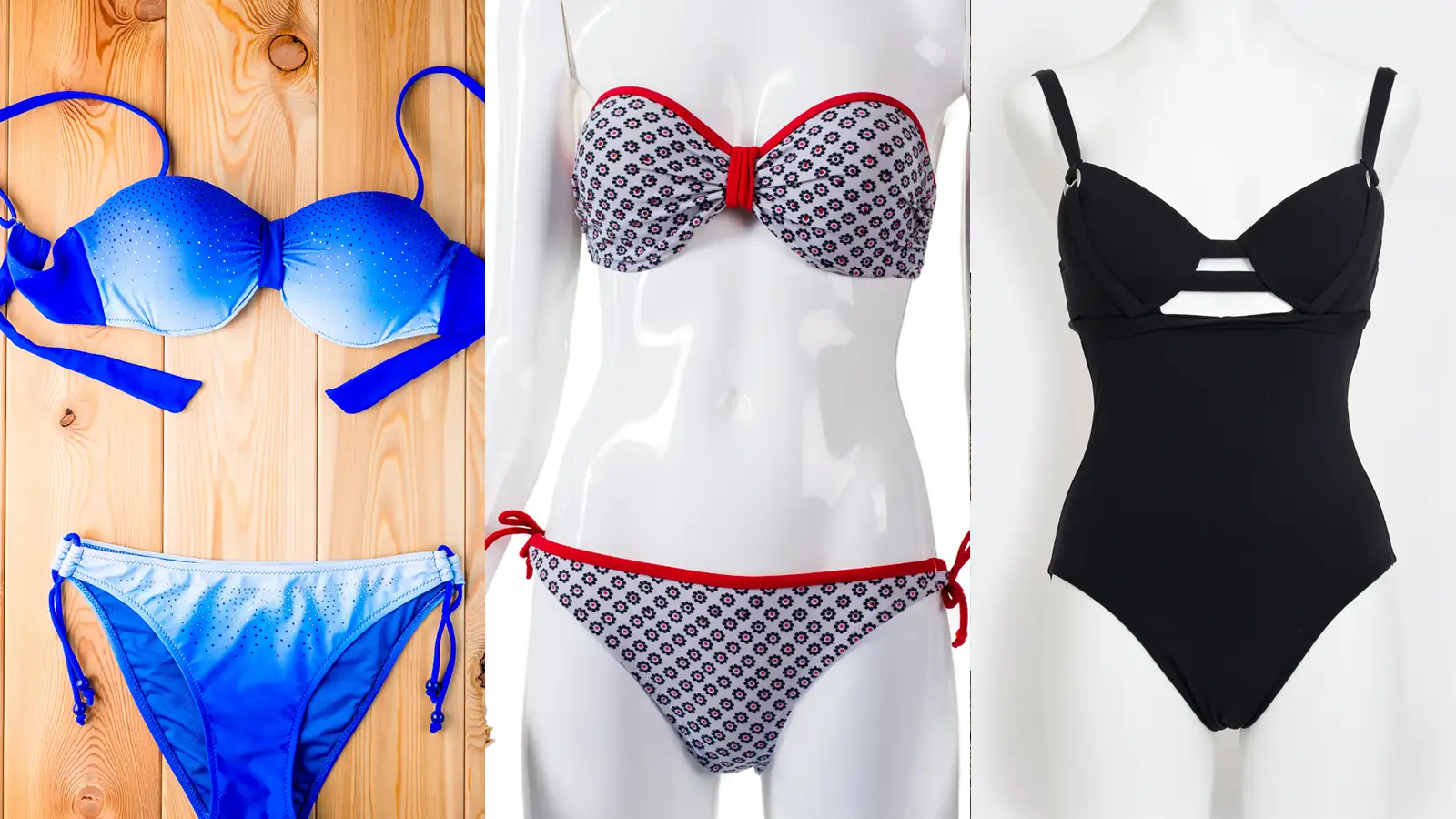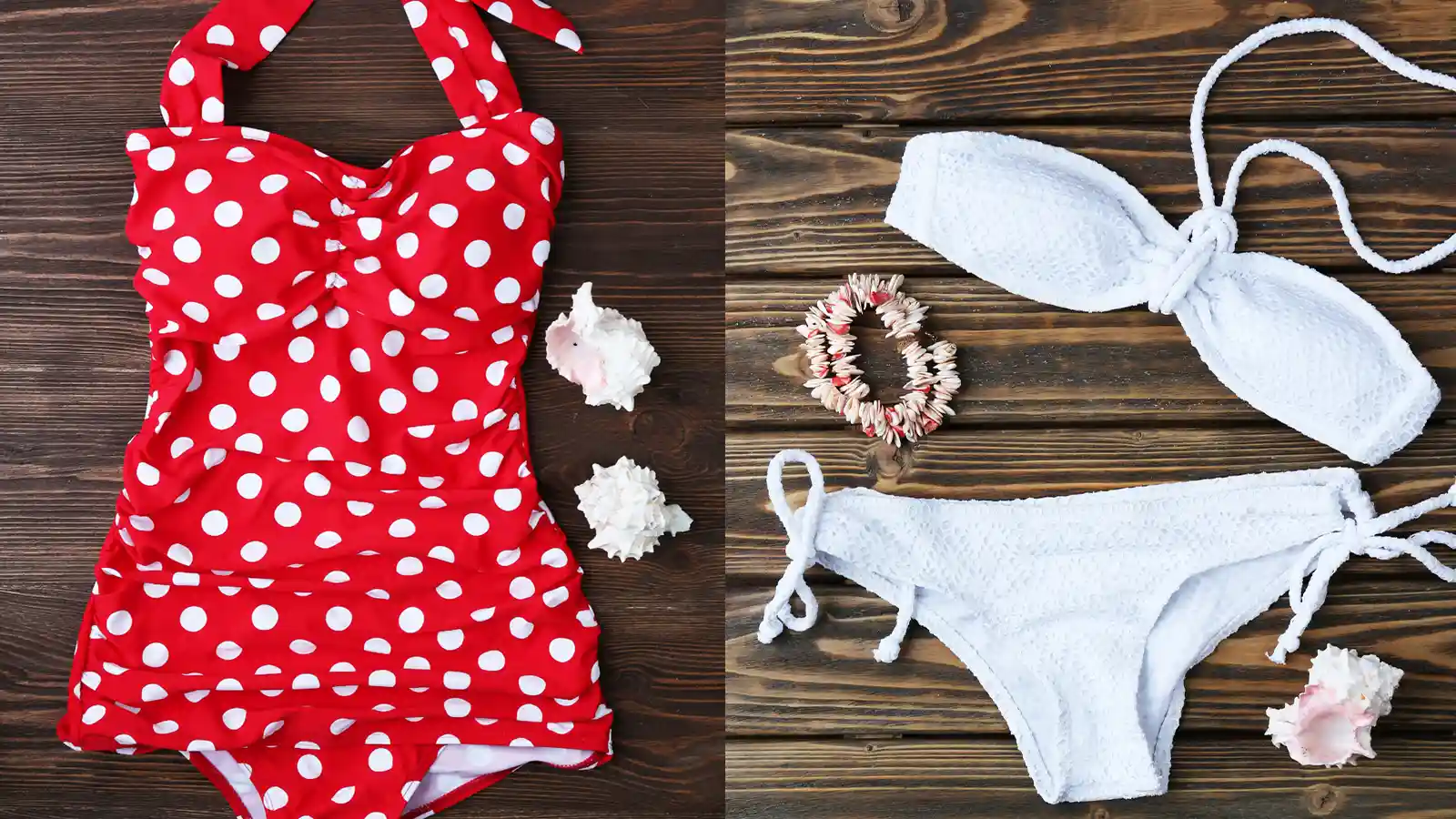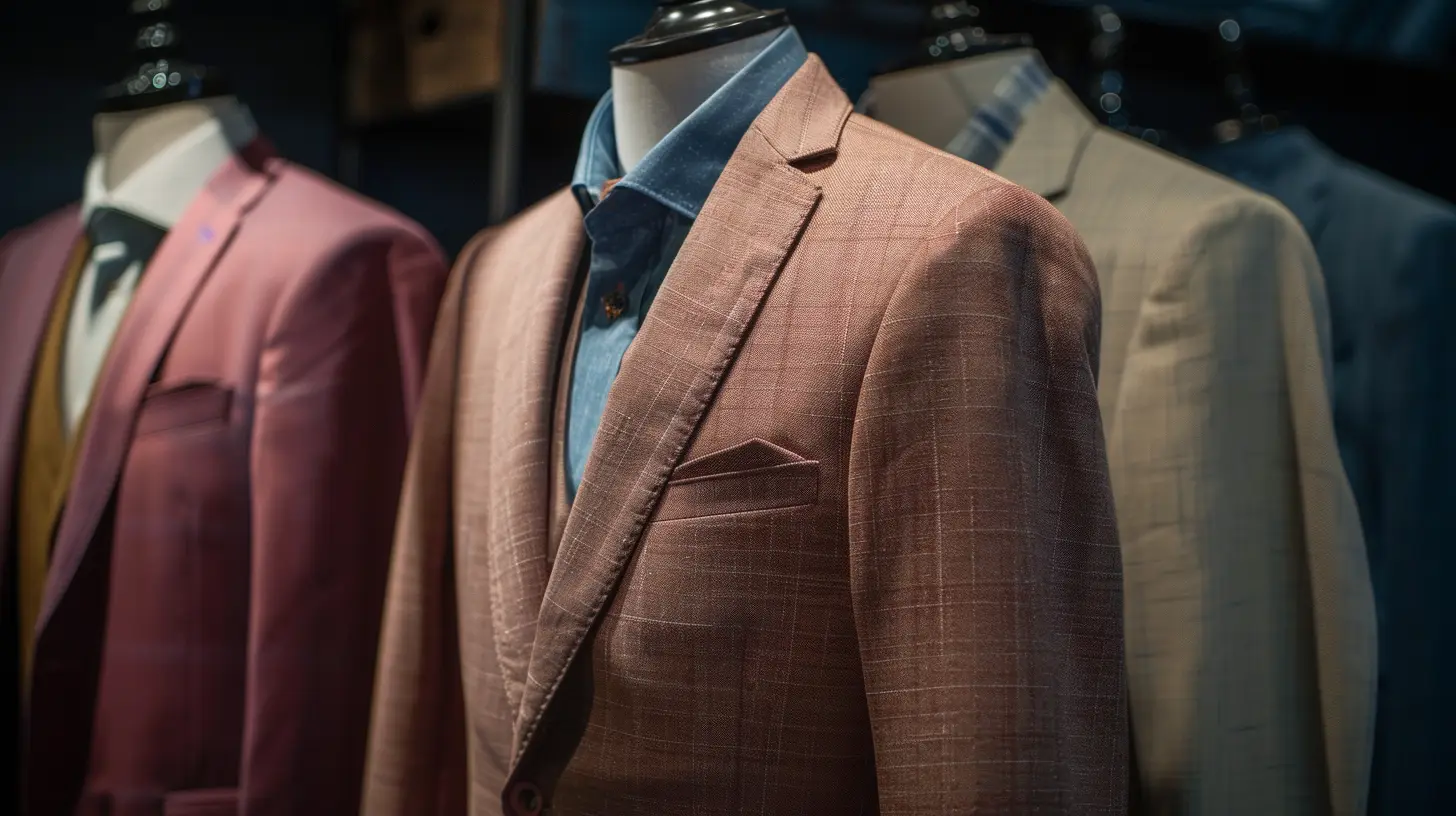When picking out fabric for your swimwear, consider the weight, composition and sustainability. Nylon and polyester blends hold prominence due to their durability, elasticity, and quick-drying characteristics. These blends feature spandex for flexibility and shape retention. Sustainability-wise, opt for recycled materials like nylon and spandex. Next, we’ll discover how elastane, nylon, and polyester greatly influence the final form and function of different swimwear styles.
Key Takeaways
- Polyester-spandex blend provides exceptional durability, colorfastness and elasticity for swimwear.
- Nylon and spandex blend is ideal for swimwear due to its quick-drying and body-hugging properties.
- Fabric weight should be considered based on design preferences and intended use, for comfort and support.
- Opt for sustainable swimwear fabric, such as recycled nylon spandex, to reduce environmental impact.
- When selecting swimwear fabric, it is essential to consider sustainability certifications.
Factors to Consider When Choosing Fabric for Swimwear
When selecting fabric for swimwear, it’s crucial to consider a few key factors. You’ll want to evaluate the fabric’s weight and composition, ensuring it is durable yet comfortable. Additionally, consider the sustainability of the material, as eco-conscious choices are increasingly in demand.
Fabric Weight
When choosing fabric for swimwear, it’s important to consider the weight of the fabric. This affects how the swimsuit will hang, stretch, and last over time. The type of fabric you choose for your swimwear affects its comfort and style.
Here’s what you need to know about fabric weight:
- Lighter weight fabrics offer comfort and quick-drying properties, perfect for swimwear.
- Medium-weight fabrics strike a balance between stretch and support.
- Heavier fabrics provide structure and are ideal for shaping swimwear.
- The correct fabric weight depends on your design preferences.
- When selecting fabric weight, it is important to consider the intended use and desired silhouette.
Fabric Composition
Now it’s important to also focus on fabric composition when choosing materials for swimwear. Your swimsuit’s fabric composition directly impacts its durability, quick-drying capabilities, and overall comfort.
A common blend in swimwear fabric is nylon and spandex due to its body-hugging and quick-drying properties. Alternatively, a polyester-spandex blend offers chlorine resistance and colorfastness. This swimwear is perfect for being exposed to pool chemicals. The incorporation of spandex ensures flexibility and shape retention. And it provides a form-fitting and comfortable garment.
Sustainability
Consider choosing swimwear fabric made from recycled materials like recycled nylon and spandex for more sustainable fashion choices. This not only promotes sustainability but also assures you of a durable and eco-friendly product.
When selecting sustainable swimwear fabric, keep in mind:
- Opt for recycled nylon spandex, known for its resilience and longevity.
- Look for eco-friendly fabrics that have a reduced environmental impact.
- Check if the fabric has sustainability certifications.
- Prioritize durable fabrics to reduce the need for frequent replacements.
- Investigate the fabric’s biodegradability or recyclability at the end of its lifecycle.
Incorporating these factors ensures a sustainable, fashionable, and functional swimwear choice.
Best Swimsuit Fabric

When selecting the best swimsuit fabric, you’ll frequently encounter three primary types: nylon blends, polyester blends, and elastane. Each material has its own advantages and disadvantages that will affect the quality, comfort, and durability of your swimwear.
Let’s now discuss these fabrics in detail to help you make an informed decision about your swimwear material choices.
Nylon Blends
Nylon blends are the best choice for swimsuit material because they are durable, stretchy, and resistant to fading. Incorporating nylon with spandex, these blends offer you comfort and a form-fitting feel that’s perfect for swimwear.
Here’s why nylon blends are a superior choice:
- They excel in durability, ensuring your swimwear lasts for many seasons.
- The stretch provided by the spandex in the blend allows for a snug, comfortable fit.
- Resistance to fading keeps the colors vibrant, even after repeated exposure to sun and water.
- Their quick-drying properties mean you won’t stay wet for long after a swim.
- Their strength and flexibility make them perfect for active water activities.
Polyester Blends
Polyester blends are a great choice for long-lasting swimwear products because they are very durable and resistant to fading. These are key factors when considering the harsh exposure to sun, saltwater, and chlorine that your swimwear will often endure.
Polyester blends incorporate spandex, offering superb elasticity and shape retention. This ensures your swimsuit fits snugly, maintains its form, and offers the flexibility needed for unrestricted movement.
Another critical feature of polyester fabric is their quick-drying characteristic, which prevents discomfort and promotes a hassle-free water experience. You can customize this polyester swimwear with vibrant prints or designs to make them both stylish and functional.
Elastane
Elastane, also known as spandex or Lycra, is the most popular material in swimwear because of its ability to stretch and recover well. This swimwear fabric is a game-changer, elevating your comfort and style in the water.
Here are five key points about elastane:
- It provides a snug fit that doesn’t compromise on your freedom of movement.
- Its resistance to chlorine, sunscreen, and oils makes it a durable choice for women’s bikini.
- Elastane is a synthetic fabric. It is often blended with fabrics like nylon, boosting the material’s strength and elasticity.
- The quick-drying properties of elastane ensure you’re not soaked long after a swim.
- Thanks to elastane, swimwear avoids sagging or distortion, maintaining its shape over time.
How do Elastane, Nylon and Polyester Influence Different Types of Swimwear?
Understanding the unique properties of Elastane, Nylon, and Polyester is essential when selecting materials for different types of swimwear. Elastane ensures excellent stretch and recovery, perfect for form-fitting swimwear.
Nylon is lightweight and quick-drying. It resists fading, pilling, and abrasion, which guarantees long-lasting quality. Polyester stands out for its colorfastness and resistance to chlorine and UV exposure. It ensures durability and sun protection.
Combining Nylon and Elastane in swimwear fabric offers a balance of stretch, comfort, and shape retention. Understanding the qualities of different materials helps in selecting the appropriate fabric according to desired characteristics like stretch, durability, and color retention.
Conclusion
So, you’ve explored the realm of swimwear fabrics. Remember, the perfect swimsuit is a blend of style, comfort, and resilience.
The choice between elastane, nylon, and polyester depends on your design’s specific needs. But no matter what, ensure your fabric can endure sun, salt, and chlorine while maintaining its shape and color.
Now, with a deeper understanding of these materials, we’re ready to dive into creating a swimsuit. It’s all in the fabric, after all.
Learn more about fabric knowledge at Longan Craft Blog, and dive into the fabric world with Longancraft!







